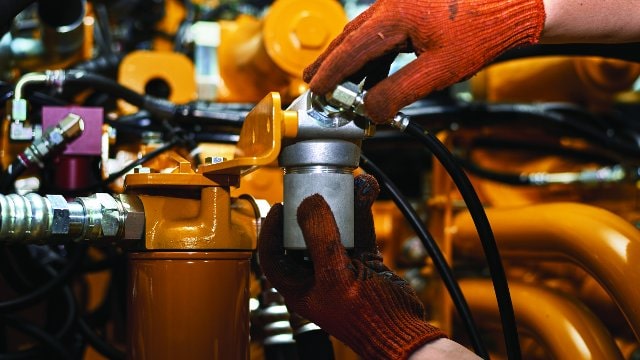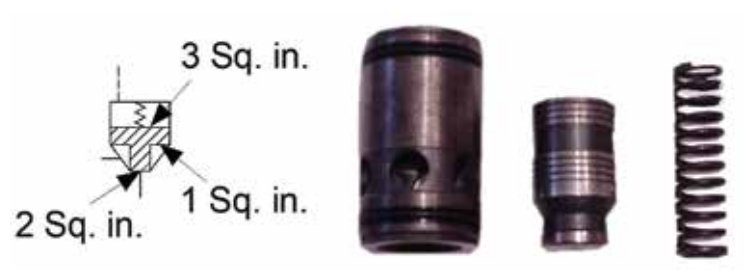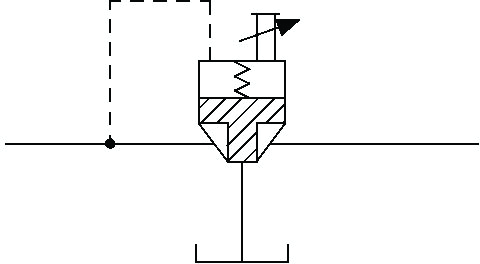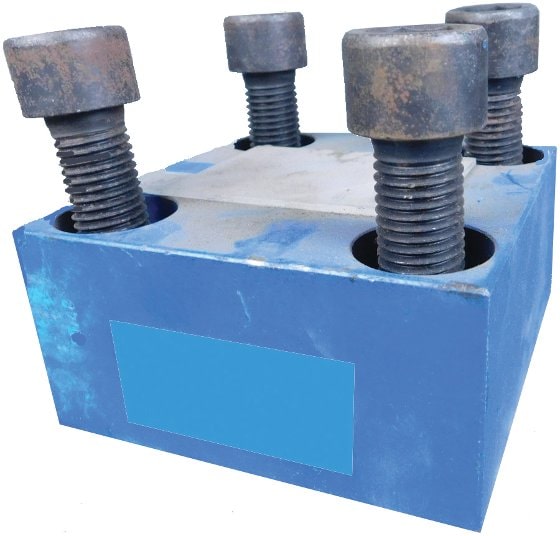Understanding Logic Valves in Hydraulic Systems
Logic valves can be difficult to understand. We even seem to have trouble agreeing on what to call them. Many people describe them as “cartridge” valves. This is not incorrect, as they are in fact cartridge-type valves. Even the manufacturers typically call them this. I have also heard them referred to as “poppet” valves. Again, this is not incorrect.
They do make a full-bevelled seat that allows no bypassing, so they definitely can be classified in this manner. However, I prefer “logic” valves, because “cartridge” does not distinguish them from other cartridge-type valves, such as a relief valve or flow control mounted in a manifold.
 Likewise, “poppet” does not differentiate them from other types of poppet valves. Whatever you prefer to call them, they are becoming increasingly popular, so it’s important to understand them as hydraulic systems evolve.
Likewise, “poppet” does not differentiate them from other types of poppet valves. Whatever you prefer to call them, they are becoming increasingly popular, so it’s important to understand them as hydraulic systems evolve.
Advantages of Logic Valves
Logic valves have distinct advantages, primarily because they are mounted in a manifold. This enables them to cope with high pressures better than conventional hydraulic plumbing. Over time, hydraulic systems are being operated at higher and higher pressures.
This allows the use of smaller actuators, making the systems much more efficient. Now, more of the energy that goes into the system can be directed to the product, and less is wasted on the mechanical machine operation.
 This might explain why so many European machines have used these valves for decades, as historically energy costs have been higher in Europe than in the United States. As U.S. plants begin to be more conscious of energy costs, more American-made machines are using logic valves.
This might explain why so many European machines have used these valves for decades, as historically energy costs have been higher in Europe than in the United States. As U.S. plants begin to be more conscious of energy costs, more American-made machines are using logic valves.
Because the valves are mounted in a manifold, less plumbing is required, so the installation costs are lower. Manifolds can be assembled before a unit is shipped. The installation then becomes more a matter of plumbing large manifolds together than installing individual valves.
 Less real estate is required inside a plant, and fewer leaks are observed. Obviously, if a hydraulic line no longer exists, it can’t leak.
Less real estate is required inside a plant, and fewer leaks are observed. Obviously, if a hydraulic line no longer exists, it can’t leak.
Of course, there is a downside to having valves mounted in a manifold. Troubleshooting a system with valves that you cannot see can be confusing.
Therefore, it’s more important than ever to understand how to read and use a hydraulic schematic as a troubleshooting tool. Unless you have X-ray eyes like Superman, you must rely on a schematic to understand the hydraulic flow.
Directional, Pressure and Flow Control
Logic valves are very versatile. They can emulate almost any type of hydraulic valve and can be used as directional controls, pressure controls, check valves and flow controls. The valves can also handle large amounts of flow with accuracy. Their design may be simple or complex, although generally, they are quite simple. While their schematic symbols may take some getting used to, they represent their function very well.
 Note the three surface areas in Figure 1 – one on top, one on the bottom and a third on the side. As you can see, the side surface area is accessed by holes in the side of the cartridge. There is also a hole on the top, and another hole on the bottom.
Note the three surface areas in Figure 1 – one on top, one on the bottom and a third on the side. As you can see, the side surface area is accessed by holes in the side of the cartridge. There is also a hole on the top, and another hole on the bottom.
The dotted line to the top surface area indicates a pilot line. At 3 square inches, the pilot surface is the largest of the surface areas. This ensures the pilot side always generates the most force whenever the same pressure is applied to either the bottom or side as is applied to the top. This is a pilot-to-close logic valve. A pilot-to-open logic valve is also available, but it is not used as often.
The most important thing to understand about pilot-to-close logic valves is that if pilot pressure is applied, the valve will stay closed. When no pilot pressure is applied, the valve can be opened with only the pressure required to compress the spring.
 This will be very low pressure. The purpose of the spring is to hold the valve closed whenever there is no pressure in the system. Typically, this pressure will be very low (1-5 bar or 15-75 pounds per square inch), depending on which surface area is used to open the valve. Usually, either a small directional valve or pressure control is employed to pilot the logic valve.
This will be very low pressure. The purpose of the spring is to hold the valve closed whenever there is no pressure in the system. Typically, this pressure will be very low (1-5 bar or 15-75 pounds per square inch), depending on which surface area is used to open the valve. Usually, either a small directional valve or pressure control is employed to pilot the logic valve.
A logic valve is often used as a pressure control when it is necessary to control pressure while handling a large amount of flow. This makes sense, as it is easier and less expensive to manufacture a small precision spring than a large one. In Figure 3, a small pilot relief valve is utilized to limit the pressure from a large amount of flow through a logic valve.
When it is desired that fluid only travels in one direction, a logic valve can be used as a check valve, as shown in Figure 4. If the flow is moving to the right, the logic valve opens once the spring tension is overcome, but any flow to the left will be blocked as pressure is applied to the pilot surface area.
 In Figure 5, a logic valve is shown with a mechanical variable actuator symbol. This symbol means there is a screw that can be adjusted to limit how far the logic valve can be opened, thus causing the valve to behave not only as a directional control but also as flow control.
In Figure 5, a logic valve is shown with a mechanical variable actuator symbol. This symbol means there is a screw that can be adjusted to limit how far the logic valve can be opened, thus causing the valve to behave not only as a directional control but also as flow control.
The variations that can be applied are infinite, allowing logic valves to emulate almost any type of directional, pressure or flow control. The important thing to understand is that the operation of the logic valve is solely dependent on its surface areas.
Remember the following formula: force = pressure x area. When tracing the flow on a schematic, consider the size of each surface area and the pressure applied. With this in mind, it is very simple to determine in which direction flow will travel.
Installation
 Logic valves are built to exacting tolerances. The internal clearances are rarely more than a few ten-thousandths of an inch. It generally is recommended that any type of valve be installed with a torque wrench, but for a logic valve, torque settings are critical.
Logic valves are built to exacting tolerances. The internal clearances are rarely more than a few ten-thousandths of an inch. It generally is recommended that any type of valve be installed with a torque wrench, but for a logic valve, torque settings are critical.
Most of these valves are mounted beneath a cover that is secured by four Allen bolts, as shown in Figure 6. If the bolts are not evenly torqued, the logic valve may not work from the time it is installed.
Failure Modes
By far the most common failure of a logic valve is due to contamination, either by particles being introduced to the manifold or generated by component wear and overheating of the fluid.
When several of these valves are mounted in a manifold, they tend to contaminate each other. While the system fluid may be changed and the system flushed, usually the pilot fluid is the same as that which was added at startup. It often never leaves the manifold.
To avoid chasing contaminants through a large manifold, you should flush the manifold when a logic valve is replaced. Many companies have suffered from contaminants moving throughout their manifolds, causing one logic valve failure after another.
Common sense tells us that all the valves in a manifold are under similar stress at similar pressures, have the same fluid travelling between them and are not mounted very far apart. Therefore, if one valve becomes contaminated, the rest of them cannot be far behind.
